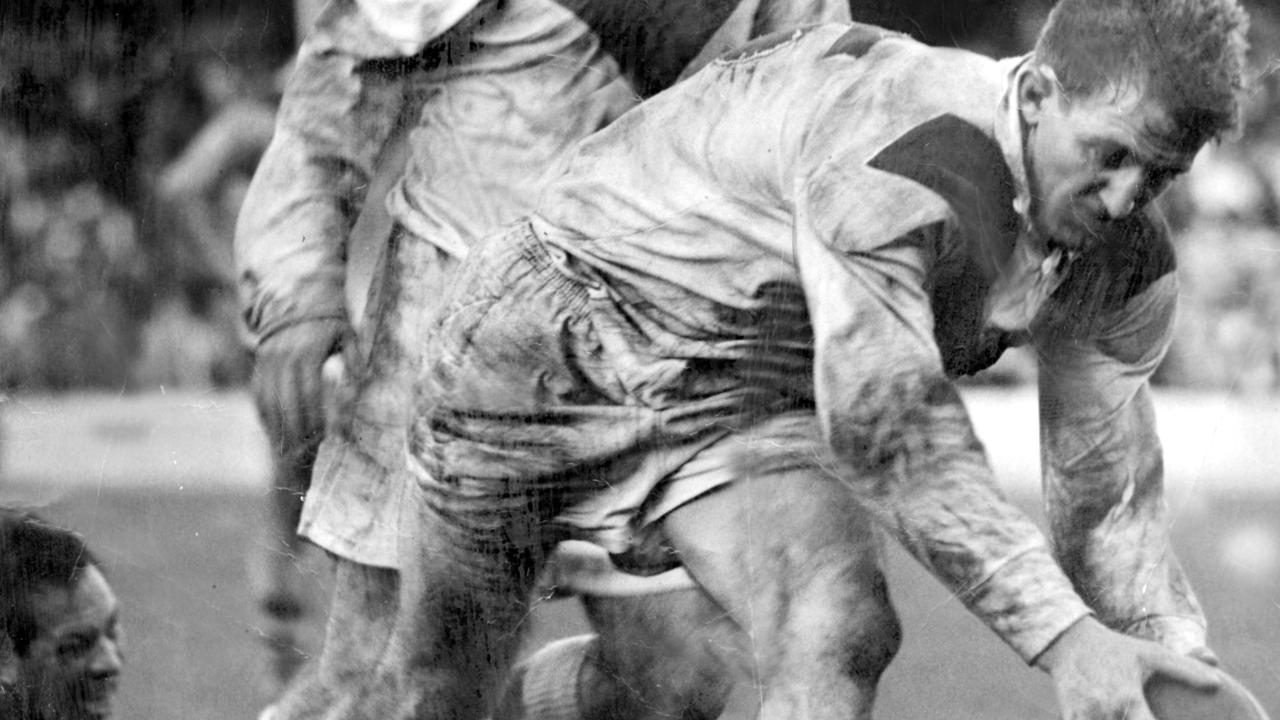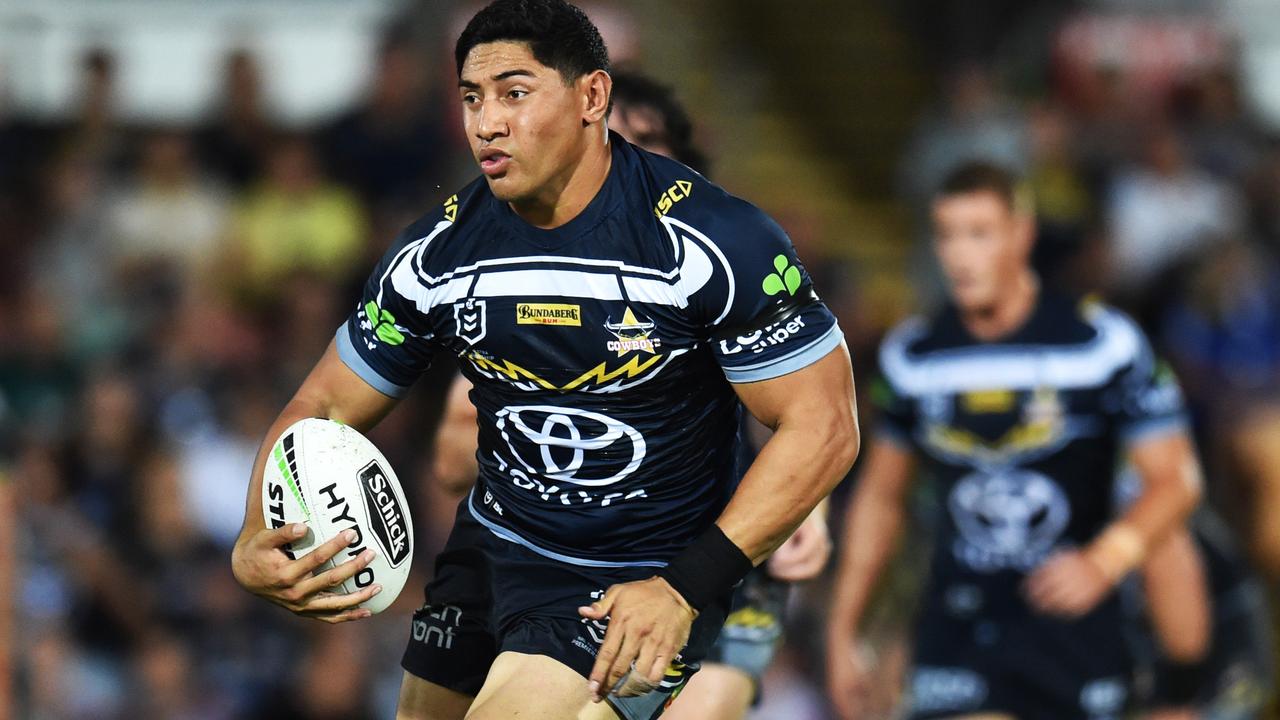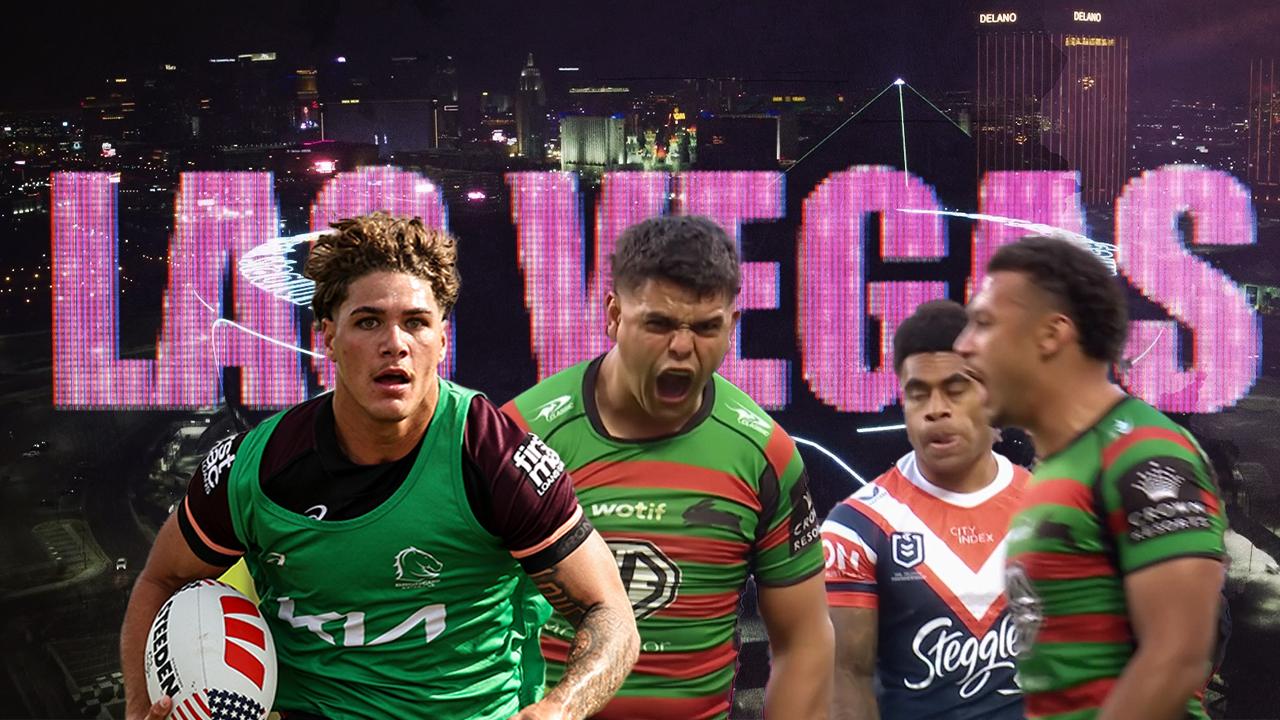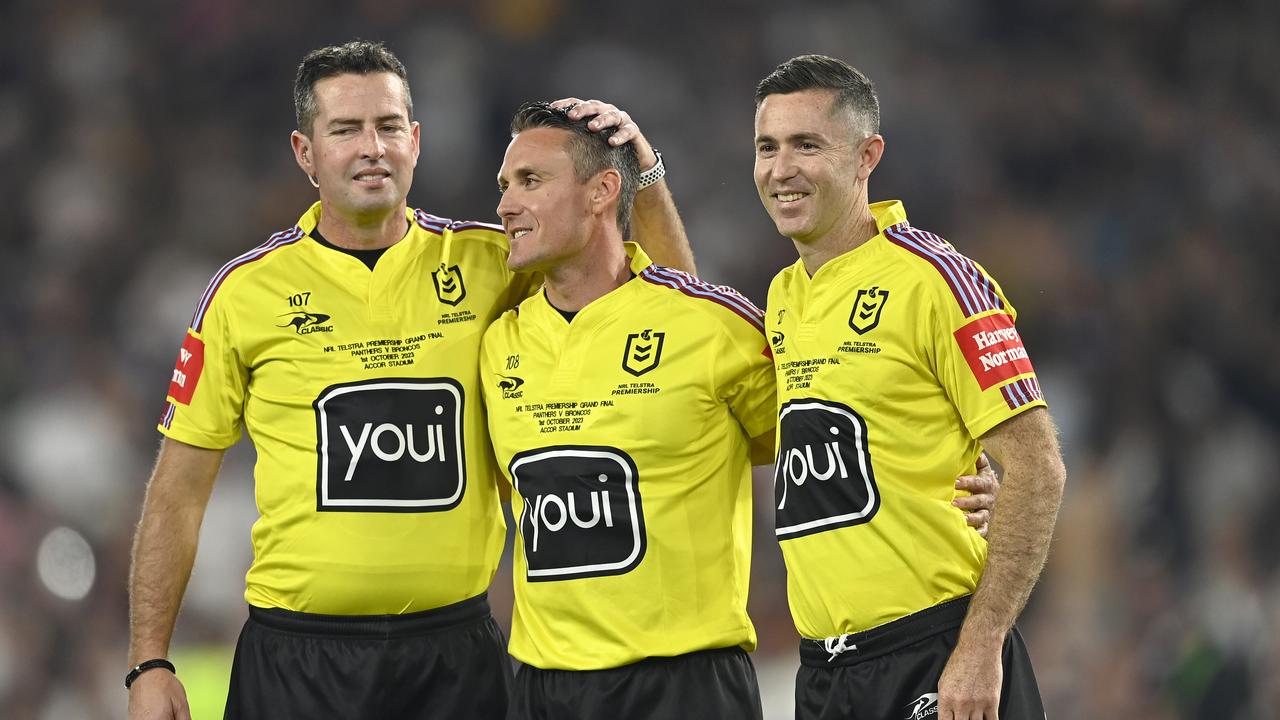With so many players injured, is the NRL becoming too tough?
The brutal physicality of the NRL is under question after the retirement of Greg Inglis and serious injuries to 64 players in five rounds. PHIL ROTHFIELD investigates

Phil Rothfield
Don't miss out on the headlines from Phil Rothfield. Followed categories will be added to My News.
You look at the battered and broken body of rugby league superstar Greg Inglis’ and start to wonder about the brutal physical demands on the modern NRL player.
You look at Blake Ferguson with his smashed up face and busted ribs last weekend. How he looked like he’d been beaten up in a UFC octagon.
There are now 63 NRL players out injured after just five rounds of the competition with official NRL research showing there has been a steady increase in average collision intensity in the game.
The injured players are not soft men. Jason Taumalolo, Paul Gallen, Andrew Fifita, Dylan Napa, Korbin Sims, Nathan Brown, Aiden Guerra, Isaah Yeo, Jared Waerea-Hargreaves, Jake Friend, Aaron Woods, Chris Lawrence, Matt Lodge and Shannon Boyd all wounded.

Surely there is a debate to be had.
Are NRL players becoming too big, too strong, too fast and too powerful for their own welfare?
Modern, sophisticated sports science has turned footballers into muscled up, powerhouse battering rams.
No shoulder pads like the old days, no helmets like in NFL, no body protection at all.
LISTEN! Matty Johns reveals his favourite Inglis memories, the impact of retirement on a player and dissects the five-eighths who are setting the competition alight. Paul Kent and James Hooper join Matty for Australia’s No.1 sports podcast.
Think about it. The greatest lock forward of all time Johnny Raper played the game at 86kg.
Jason Taumalo, the best in the modern game in the same position, is 29kg heavier.
In every position on a football field, player weights have exploded.
The great winger Ken Irvine was 77kg in his heyday. Parramatta Eels winger Blake Ferguson is 30 kilos heavier.
Knights halfback Mitchell Pearce is heavier than his father Wayne, who was one of the game’s toughest forwards.
Collisions and contact on an NRL field these days can be frightening. Teams are 200kg heavier than back in the 1970s.

Yet it is the gladiatorial nature of rugby league that makes it the greatest game of them all.
But what will the game be like in another 20 years? Not next weekend, not next year but 2040.
In the non-professional days a weekly training schedule consisted of a road run, a few laps of the oval, occasional weights, some light ball work and a beer at the pub. Players held down nine-to-five jobs.
Now it is a ferocious 24/7 power and strength commitment.
Fatigue is a thing of the past because of the interchange in a game of high speed combat for 80 minutes.

As Benny Elias says: “the beauty of our game in the old days was that anyone, any size could play it.
“It was skill more than size. In AFL you had to be over six foot tall but in league size didn’t matter.”
There are some ‘out there’ ideas about how to take some of the heat out of the contest.
Further reducing the number of interchanges will obviously create more fatigue.
Even reducing the number of players on a football field to 12 has been mentioned as an option.
It would not only open up the game but bring back some exhaustion. Maybe even reduce the 10 metres to eight metres to slightly lessen the impact.
Even old Steve Blocker Roach is taken back by the amount of punishment the players are having to cope with.
“I’ve watched Wests Tigers players just wrestle at training and it makes you cry,” he said.
Roach believes the NRL should consider limiting two players to a tackle.
“The third man in is causing the problems,” he said, “It would take some getting used to but it’s at least worth a discussion.”

Veteran Wests Tigers and NSW State of Origin trainer Ronnie Palmer started under Arthur Beetson at Roosters back in the ‘80s.
“We trained two nights a week,” he said, “half an hour in the gym then an hour on the field then we’d all go home.
“I don’t think there is anything to be alarmed about but maybe we should be looking at the players’ workloads over a long season in club and rep football rather than what’s happening on the field.”
To the NRL’s credit they take every precaution these days, especially with concussion. There have been 45 head injury assessments in the first five rounds.
However the handling of the shocking Nene Macdonald injury in Townsville last weekend was absolute amateur hour.
Hardened rugby league lovers will no doubt blow up at any suggestions the game is now too tough.
As Dragons warhorse James Graham said recently: “If you don’t like it, go and play Oz Tag.”
Yet it is a discussion that needs to be had. The players deserve that.
Originally published as With so many players injured, is the NRL becoming too tough?



